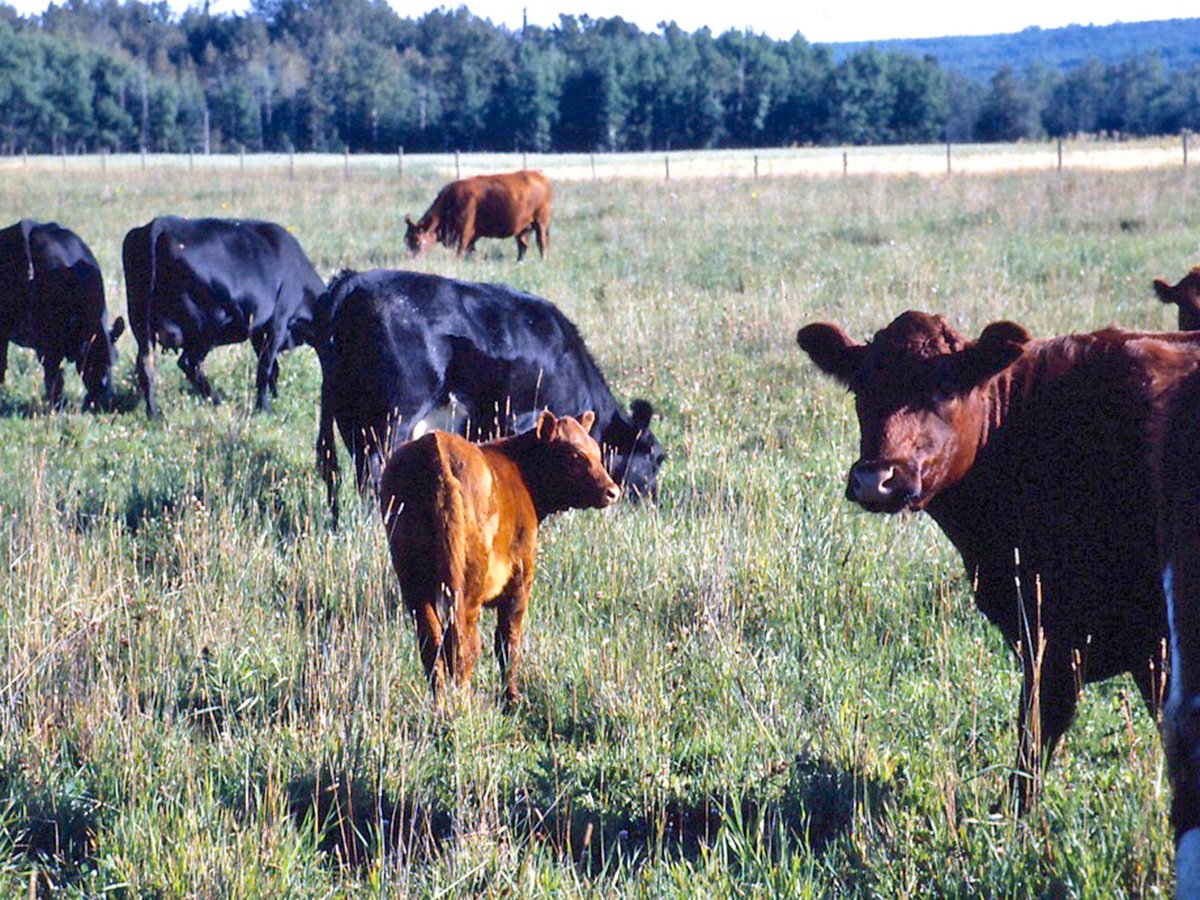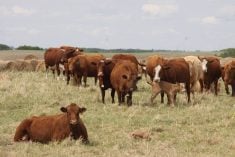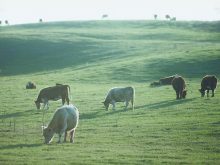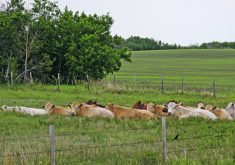Regular assessments of pasture health are key to improving productivity, protecting soil and making grazing land more resilient to weather extremes, says a range management biologist with Agriculture Canada.
The concept of pasture health is similar to the health of the human body and depends on its ability to perform the functions it needs to, Mae Elsinger, who is based at Agriculture Canada’s Brandon Research and Development Centre, said during a Manitoba Agriculture Stock Talk webinar last month.
She said a functional pasture does many things — feeds animals, provides wildlife habitat, sequesters carbon, stores water to slow sedimentation and downstream flow and can help prevent flooding.
Read Also

Quebec pork company calls for transparency around gene-edited pigs
Quebec-based pork company duBreton is calling for transparency around meats from gene-edited pigs on concerns that a lack of mandatory labelling will confuse consumers, and dilute certification claims. The organic sector is also calling for labelling rules.
“So in order to measure that, we look at various indicators,” she said.
When assessing a pasture, it’s not enough to just count weeds or plants. Pasture assessment tools measure how well a pasture performs those key functions. That’s done using specific questions that evaluate plant composition, structure and function, soil cover, erosion, litter levels and the presence of invasive species.
The Beef Cattle Research Centre advises producers to learn to recognize all the plants in their pasture and understand what roles in the ecosystem they play.
An Alberta Range Health Assessment tool on the BCRC’s website allows producers to compare current pastureland conditions to a standard called the Reference Plant Community, a benchmark of what would naturally grow in the area if it were left untouched.
The five main criteria of the assessment include plant community composition, plant structure, litter abundance, soil stability and noxious weed presence.
“Alberta in the early 2000s developed pasture health assessment methodology for native grasslands, tame grasslands and also wooded pastures,” Elsinger said.
In the assessment process, producers must determine whether the plants in their pasture are the ones that are expected in that particular ecosystem type. Tame forages are species introduced from other regions or continents, while native forages originated in the Great Plains and evolved under local conditions. Both can provide value, but the right mix depends on the site and goals. Forages that are edible, nutritious and abundant are considered desirable, Elsinger said.
It’s also important to look at plant structure and function when assessing pasture.
“Is the community dominated by tall forages?” Elsinger said.
“Tall forages, productive forages … we’re looking at growing grass, orchard grass, timothy, alfalfa, sweet clover.”
Low-productivity species such as June grass or white Dutch clover can reduce yield and forage quality, Elsinger said.
“We’d rather have those abundant ones, like the brome, the alfalfa.”
Plant litter, which is dead organic material left on the soil, is integral for cooling the soil, preventing erosion and contributing to nutrient cycling.
“We understand plant litter has a huge number of functions. It keeps the soil cool, it reduces rain drop impact, prevents erosion, stifles weed seedlings,” Elsinger said.
“It’s a step in the process of adding organic matter, particulate organic matter, to soil.”
One of the most critical issues in assessing pastures is soil exposure and erosion, which looks at both the macro and micro level.
“Is the soil washing away? It’s easy to assess on a macro level, but we also want to assess early signs like micro erosions,” Elsinger said.
“Are the root crowns of the plants exposed?”
Even small disturbances such as hoof shear and raindrop splash patterns can be indicators that a pasture is at risk, she added.
The assessment also penalizes the presence of noxious weeds, but not all weeds are treated equally.
“We’re not penalizing the nuisance weeds … like dandelion, strawberries, yarrow. We’re penalizing the particularly bad noxious weeds.”
These include tier one and two weeds as defined by Manitoba’s Noxious Weeds Act.
Brush encroachment, which is the spread of woody vegetation such as shrubs and trees, is another red flag in pasture health.

“It reduces the productivity, and it can be a nuisance for herd animals,” Elsinger said.
“One clump of trees ain’t so bad, but if you have continuous, single, random ones throughout the pasture … pretty quick, some of them can become more of a problem.”
When all the questions in the assessment are answered, the scores are tallied. A perfect score is 100, but not every pasture needs to be perfect, Elsinger said.
“If you have 75 to 100, you have a healthy pasture and very minimal to no impairment functions. But as you get more down towards 50 points, you end up with health problems, in which case you might think about doing some minor tweaks to your management.”
Scores under 50 indicate serious issues, Elsinger said.
“You may need (a) major, major rethink of how your grazing system is, or … you may have to add some infrastructure, some water systems, some cross fences.”
Assessment systems are accessible to producers and detailed guides and workbooks are available online, including through the Manitoba Forage and Grassland Association.


















